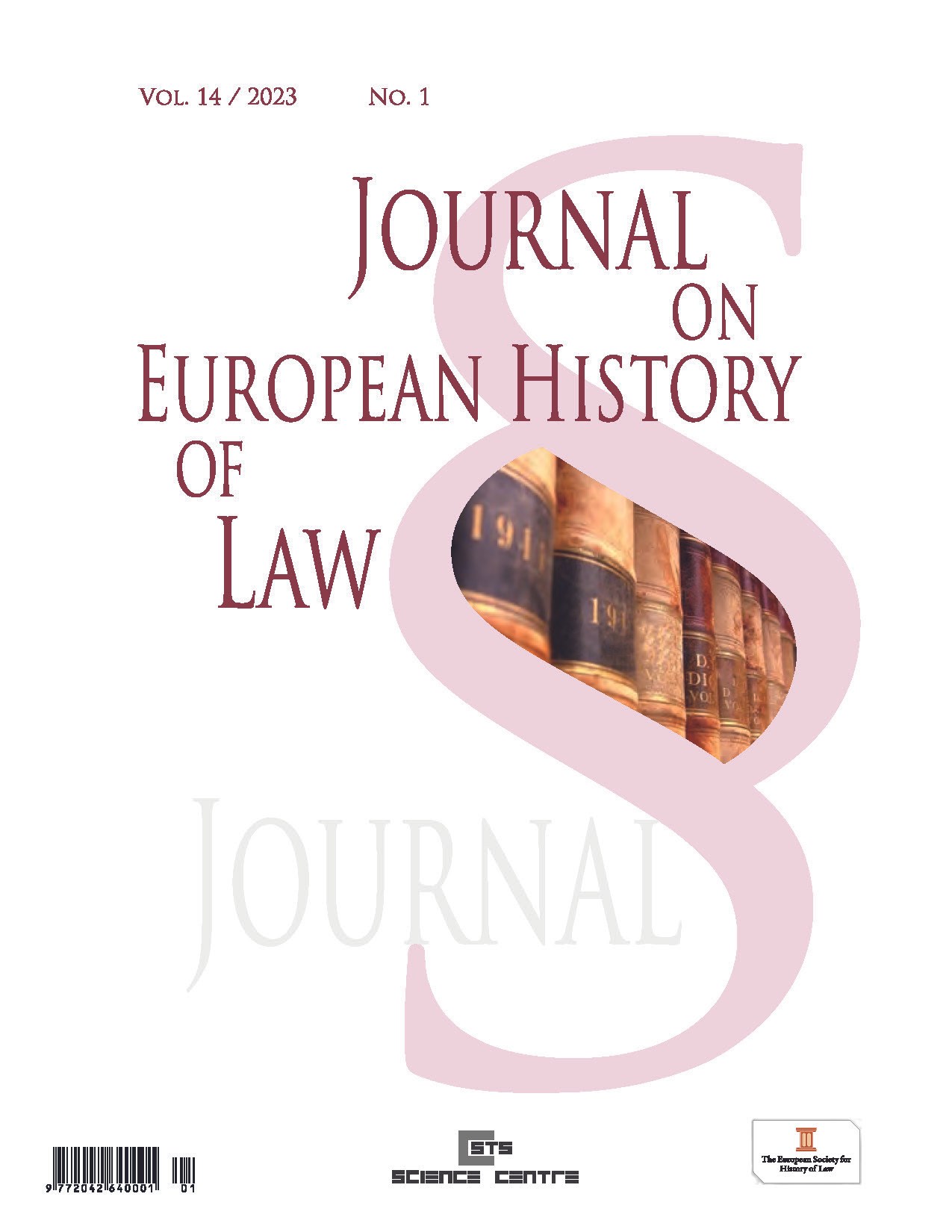Iudex sceptro aequitatis armandus est. Richterliche Insignien in der europäischen Rechtstradition bis zum 18. Jahrhundert
Iudex sceptro aequitatis armandus est. Judicial Insignia in the European Legal Tradition until the 18th Century
Author(s): Vid ŽepičSubject(s): Law, Constitution, Jurisprudence, History of Law, Middle Ages, 16th Century, 17th Century, 18th Century
Published by: Evropská společnost pro právní dějiny, z.s.
Keywords: Insignia; Judge; Sword of Justice; Rod of Justice; Book; Ceremonial vestment; Judge´s Chair; Legal symbolism; Legal archaeology; Dignity; Ius commune;
Summary/Abstract: In spite of the variety and multitude of judicial authorities, a survey of the judicial insignia in continental Europe between the High Middle Ages and 18th century reveals a surprising uniformity and constancy both in the particular as well as the ius commune legal tradition. The sword of Justice, the Judge`s chair, his robes and book figure prominently in the medieval illuminations. Insignia formed the identity of the judge and served as a reminder of the presence of a political institution of a transpersonal character: the judicial authority was hence represented through the display of the inisignia. The aim of the article is to defend the proposition that the exterior signs of delegated judicial authority in pre-codification continental Europe manifested themselves in a rather consistent appearance because they reflected a common idea of a delegation of judicial authority, which was to be accompanied by the visual transfer of materialised symbols.
Journal: Journal on European History of Law
- Issue Year: 14/2023
- Issue No: 1
- Page Range: 24-35
- Page Count: 12
- Language: German

